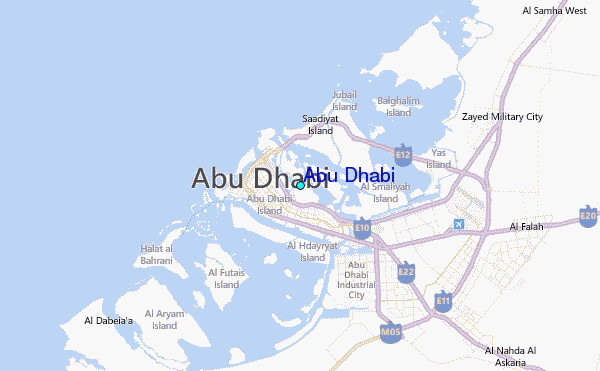Locational Map
Covering a total area of 268,021 sq.km (103,483 sq mi), New Zealand is comprised of two large islands that can be observed on the physical map of the country above - the North Island and South Island (which are separated by the Cook Strait), as well as Stewart Island, hundreds of coastal islands and about 600 small regional islands.
From north to south, New Zealand is a country of snow-capped mountains and scenic landscapes. Positioned along the Ring of Fire, the Southern Alps (and its many ranges) extend through the western portions of South Island. As marked on the map by an upright yellow triangle, the country's highest point, Mount Cook (Aoraki) is located in the Southern Alps, as well as over 350 glaciers and a wide assortment of national parks. Mount Cook rises to an elevation of 12,316ft (3,754 m). Throughout the Southern Alps, an additional 19 mountains rise above 10,000 ft (3,000 m). Along the western side of these massive peaks there's a narrow strip of coastline. Along their eastern flank, the mountains slope into a region of rolling hills and plains, drained by glacier-fed rivers.
Location Mapper
Find Fuel Prices and search for amenities at Love's and Speedco. Covering a total area of 268,021 sq.km (103,483 sq mi), New Zealand is comprised of two large islands that can be observed on the physical map of the country above - the North Island and South Island (which are separated by the Cook Strait), as well as Stewart Island, hundreds of coastal islands and about 600 small regional islands. Location and Business Maps for the Education Sector, Health Sector and Commercial business. The Location Map is established as the definitive quality navigational aid giving the ultimate in first impression status. In its simplest form a Location Map demonstrates the level of attention an organisation has gone to before a visitor arrives. This map was created by a user. Learn how to create your own.
Interactive TV Coverage Browser. This is a mapping tool that will let you browse the TV transmitters in your area and see their coverage maps. Channel reception is estimated using the same 3D propagation modeling algorithms that are used throughout this site, but the results are presented in a more visual and dynamic format.
In the far south, within the confines of Fiordland National Park, a jagged coastline of fjords, inlets and bays front the Tasman Sea. Milford Sound – located within the park, is surrounded by sheer rock faces that rise to 3,937 ft (1,200 meters) or more on either side. It's widely considered New Zealand's top travel destination.

The mountains found on North Island are volcanic in nature, and many remain quite active. On the island's southwestern corner, Mount Taranaki (or Mt. Egmont) rises to an elevation of 8,261 ft (2,518 m). Other volcanic peaks of note stretch across a wide central plateau, including Mount Ruapehu (2,797 m/9,177 ft), Mount Ngauruhoe (2,291 m/7,515 ft), and Mount Tongariro (1,968 m/6,458 ft). This thermal belt area is replete with boiling mud pools, geysers, hot springs and steam vents.
Broad coastal plains ring much of North Island, and along its central western coastline, limestone caves, caverns and underground rivers are common. Along the north eastern coastline, the Bay of Islands is famous for its 125 (or more) scenic islands and secluded coves. With Mount Maunganui guarding the entrance, and nearly 62 miles (100 km) of white sand, the Bay of Plenty is New Zealand's premier beach area.
Locational Map Definition
Large areas of temperate rain forests are found along the western shore of South Island, and across much of New Zealand's North Island.
Directions From One Place To Another

Location Mapping Software
Occupying an extinct volcanic crater, the country's largest lake is Lake Taupo on North Island. The country's longest river, the Waikato, flows north from Lake Taupo through Hamilton, and on into the Tasman Sea. Lake Te Anau is the largest lake on South Island. The Clutha River is the island's longest river, and like most rivers here, it originates in a Southern Alps glacial lake. The lowest point of New Zealand is South Pacific Ocean (0 m).